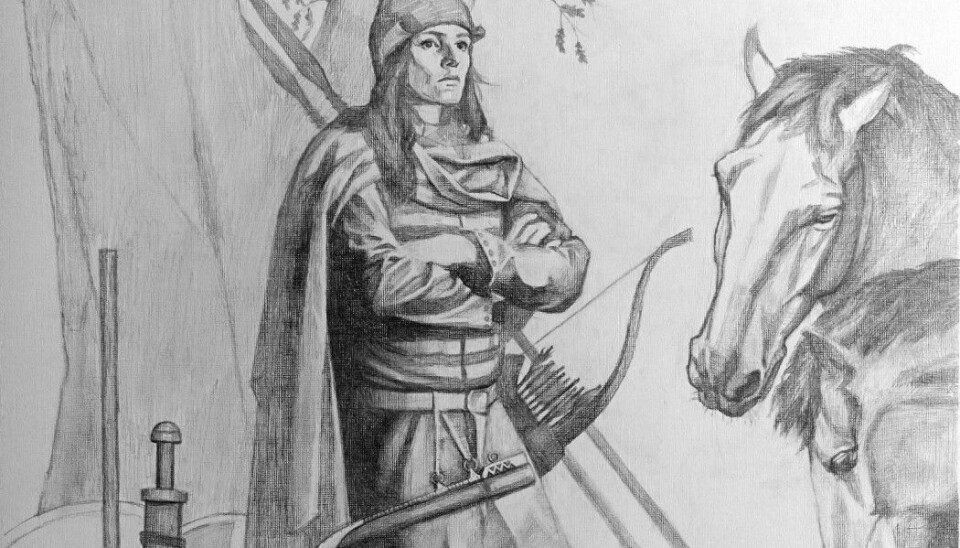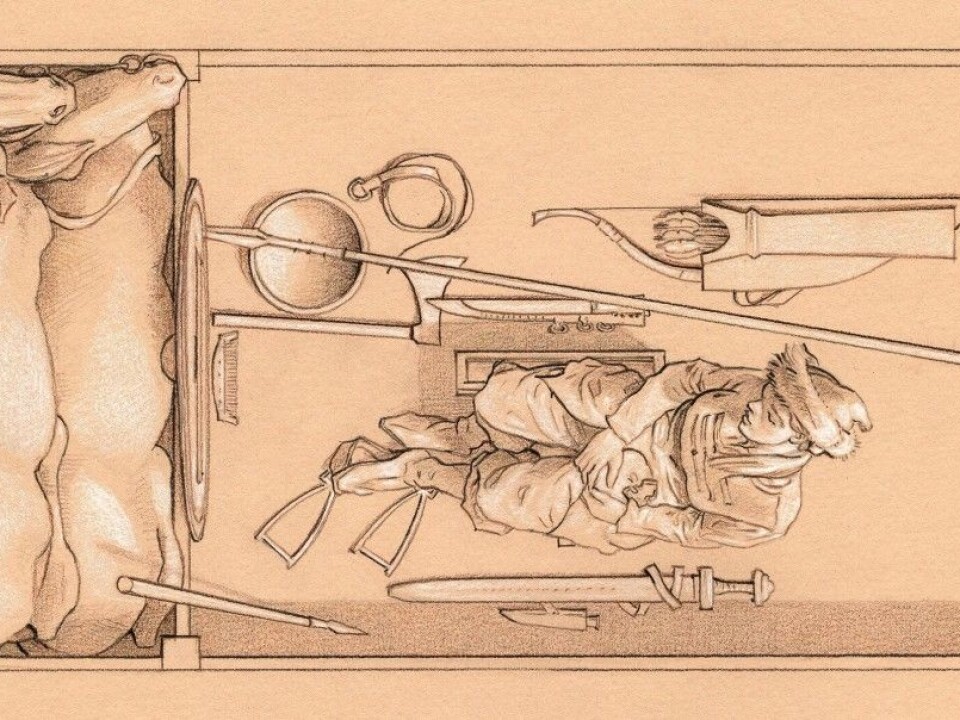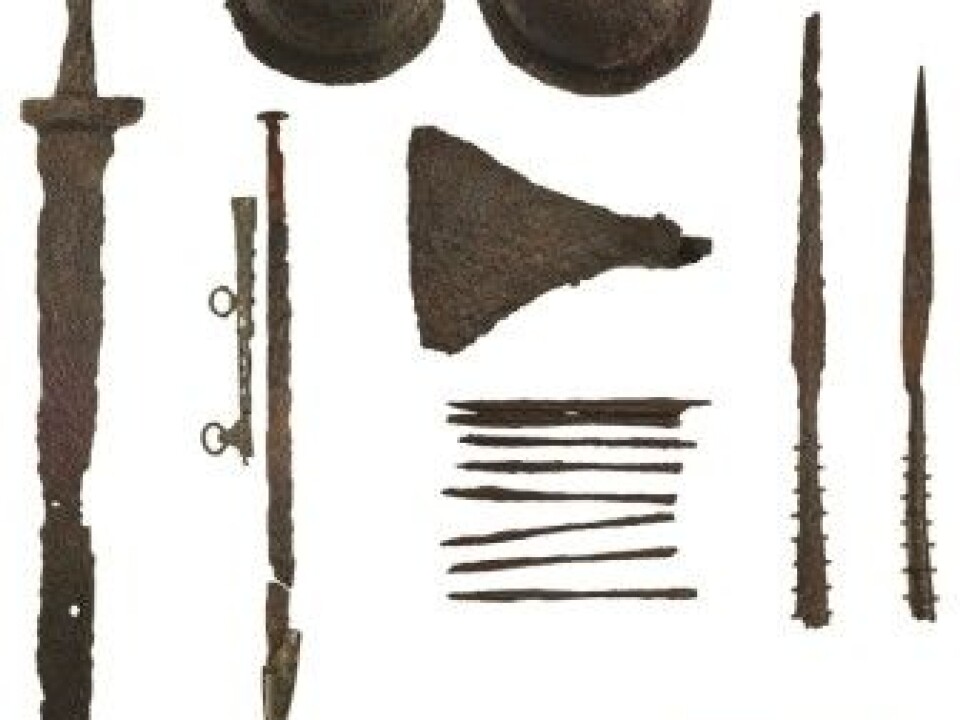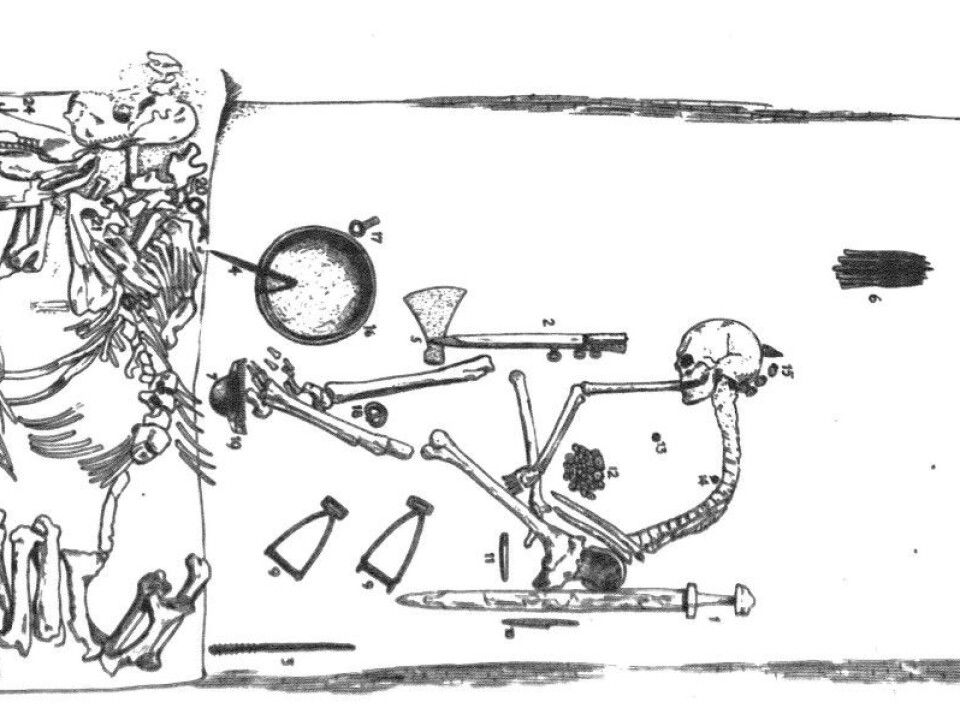
Warrior buried in a Swedish Viking grave was actually female
When archaeologists excavated a Viking grave in the late 1800s and found weapons, they realized they’d found a warrior’s burial place. But it turned out that warrior was a woman.
Birka, an old Viking town located on an island outside of Stockholm in Sweden, is home to more than 1100 Viking graves.
When one of these graves was excavated in 1878, researchers determined it belonged an important warrior who was assumed to be male.
The grave dates from the 9th century and contained many different weapons in an underground chamber. The person was also buried with a bag full of game pieces.
The grave contained two horses, and the individual wore the clothes of a warrior. One of the horses was equipped with a bit, as if it had been readied for riding.

In 2017, a research article reported that a genetic analysis of the body in the grave showed the individual was actually female.
Now the researchers behind this discovery have written a new article on the challenges of interpreting finds from a Viking grave, and the significance of the finding that the warrior in the grave was actually female.
Massive response
The researchers said their 2017 article drew a massive response.
Experts have believed a man was buried in the grave ever since it was found in 1878, but as the researchers point out, the assumption makes sense, because at the time the grave was found, soldiers and warriors were almost always male.

The researchers say their finding also illustrates how difficult it is to interpret gender based on objects that are found buried with an individual.
And the role of the Viking woman herself may have been complex. She may have taken a man's social role, but still had a feminine identity, as described by the researchers. She may also have had a more fluid gender identity.
You can read the entire academic article yourself on the Antiquity website.
Women's roles during the Viking Age may have been much more nuanced than previously believed. For example, two women who were buried in the Oseberg Viking ship, excavated in 1904 on a farm south of Oslo, may have been powerful in their own right, instead of deriving their power through kinship or a relationship with a man.

The researchers have received many inquiries about how to interpret the grave, including questions as to whether the person in the grave could have been transgender.
Although the scientists said they know why people ask, they are quick to note that transgender is a modern, political term that is difficult or impossible to use in conjunction with people who lived long ago, when other norms and rules applied.
Most likely a warrior
The researchers also point out that although genetic tests show that the grave contained a woman, nothing else in the grave has changed as a result of the finding.
They believe it is very likely that a high-ranking warrior was buried here, although this is also an interpretation.
Weapons can also be interpreted as a symbol, showing that the person in the grave lived their lives as if they were warriors. There are examples of children being buried with weapons, even though they clearly did not use them.
The researchers emphasize that it is important to be careful in interpreting any grave, but they are nevertheless quite sure that this grave contained a warrior.
The woman was buried with many different types of weapons, and only one other tomb at Birka has as many weapons as this one.
The tomb is also located on a hill right by a military fortress, and near other tombs with weapons.
If one Viking woman lived as a warrior, there are probably more, the researchers believe.
They encourage other researchers to revisit ancient findings, or to conduct genetic analyses of bodies buried in already identified graves.
----------




